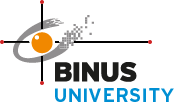INTRODUCTION TO DATABASE SYSTEMS 4 SCU
Learning Outcomes
Explain the role of databases in organizations and information systems; Use SQL to construct, secure and access the database; Apply formal languages associated with the relational database model, including relational algebra, and relational calculus; Develop a relational database using database design methodology three main phases: conceptual, logical, and physical design; Use formal technique for producing a set of normalized relations that support the data requirements of an enterprise; Use the advanced SQL programming language in a DBMS environment; Develop a distributed DBMSs along with its transaction management and replication techniques; Use database management system in the web technology and mobile environment.
Topics
This course introduces the concept of information modeling, which emphasizes the importance of grouping the information into specific categories before it is transferred to the actual database design. Later in this course, an implementation phase is discussed to ensure the students are well aware of any implications that might develop from improper information modeling. In addition, this course also aims to introduce students to the concept of database design by predicting the use of future retrieval systems. Students understand that both a consideration of the data model and awareness of the retrieval system to be applied are required in designing a database. Consequently, new concepts are introduced, such as query processing and optimization, transaction processing concepts, and concurrency control techniques. This will lead students to understand the method of database tuning, functional dependencies, and normalization for RDB that will help them to understand further courses. This course also covers selected issues related to databases such as advanced SQL programming language (SQL/PSM and PL/SQL), cursor and stored procedures, techniques in transaction management, distributed DBMSs and replication, as well as data-warehousing concepts. The implementation of web technology and databases along with mobile databases will also be highlighted.



SOCIAL MEDIA
Let’s relentlessly connected and get caught up each other.
Looking for tweets ...